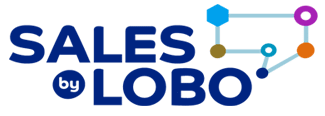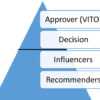Outcome-Based Selling: A Quick Guide
What is Outcome-Based Selling and Why is it Important?
For decades, being a successful and effective salesperson depended on your ability to win business through a competitive RFP process. Those who could prove that the features and functionality of their product were the best match for the customer’s needs and could offer them at a competitive price were usually the most successful.
However, the world of technology sales is changing due to two macro trends:
- Companies now prefer to purchase their technology “as-a-service” where the supplier is accountable for managing and operating the technology
- Business buyers now play an increasingly significant role in the technology solution purchase decision
At TSIA, we are seeing across the industry that the traditional approach to sales is not yielding the results it once was. The evidence suggests that if you continue to sell in the same way in the future as you sold in the past, you are destined to be less and less productive.
So, what’s the alternative? An emerging new practice in the world of technology sales, referred to as “outcome-based selling”.
Outcome-Based Selling: What is it?
The main difference between traditional selling and outcome-based selling is talking about the customers priorities (the things they care about) instead of your products and services (which they probably don’t care about). Basically, you’re selling the outcome, not the product.
We’re not saying that salespeople in the past have not spoken about business value or outcomes, but it’s usually been later in the sales process to try and justify an investment. The difference with outcome-based selling is that you open the discussion with a prospect (whether they’re new or existing) by talking about what you know, or suspect, are the business outcomes that are a priority in their world.
How to Get Started with Outcome-Based Selling
In outcome-based selling, you have to create a compelling story that contains a series of “links” between the customers’ priority business outcomes and your offerings.
The leading companies that have adopted this business outcome sales approach link the business outcomes to a set of relevant financial results that the customer will achieve. Then, they further demonstrate their knowledge of the customer’s business by speaking to the KPIs that the customer will monitor to ensure they are on track to achieving their desired results.
The next step is critical, which is to talk about the business processes that will need to be optimized in order to impact those KPIs. From this point, you can tell the story of which technologies (your offers) are required to drive improvements to the efficiency and effectiveness of the identified business processes. This will enable you to easily map your products and services to the enabling technology categories, and by extension, the outcomes the customer will achieve by purchasing that technology.
4 Tips for Outcome-Based Selling
So, the outcome-based selling model does not suggest that you stop talking about what you’re looking to sell, it just means that you’ll be doing it in the right place in the sales conversation. It happens after you’ve established the linkage between what the customer is looking to achieve and the capabilities of what you offer.
This approach holds four basic promises:
Sell to New Logo Customers in a New Way
The vast majority of buyers are tired of being approached by new salespeople who only want to show them products. If your salespeople lead with an angle that demonstrates an understanding of the customers’ priority business outcomes, they will get more meetings, especially if they are starting to target business or CXO buyers.
Credibility is gained by speaking in a language that your customers understand and by showing them a tangible connection between what they care about and what you have to offer. Companies that are using this approach report higher levels of customer engagement earlier in the buying journey.
Stimulate New Spending from Existing Customers
Your existing customers think that they know you because they already use some of your solutions. But consider how many of your accounts use more than 20% of your portfolio. Our members report that this is usually in a minority.
Selling more to existing customers has been a challenge in technology sales for years, and few companies have effectively broken out of the box that their customers have them in. We are starting to see companies becoming effective at this by leveraging the success of their other customers and telling a business outcome-based story about how they can create value in ways their existing customer didn’t know or didn’t believe.
Be More Effective Selling to the C-Suite or the Business Buyer
IT buyers used to purchase technology based on a combination of features, function, and price. Business and executive buyers, however, don’t work in this way. Very often, they don’t really care how the product works, they only care about the business outcomes they can achieve by implementing your solutions.
They also want to hear your story of how you can help them as quickly as possible. They generally aren’t interested in sitting through an hour-long PowerPoint monologue, but rather want a quick storyboarding experience that is a true dialogue. A discussion that gets to the point quickly, builds the business case clearly, and is easy to tailor to their unique requirements is key.
Differentiate Based on Business Impact Rather Than Price
Most of your competitors sell on features and price. This suits your customers because it makes it easier for them to compare everyone in the “beauty contest”, but it also leads to commoditization and discounting. What most of your competitors can’t do is effectively sell on business value. Doing that successfully requires you to demonstrate a realistic understanding of how your differentiated capabilities actually translate into a measurable result at their company.
You need to identify the business processes that are targeted for innovation, as well as make it clear that your solution is focused on those. Once that is clearly established, then your prospect is ready to hear about how your product and service portfolio can deliver the outcomes.
It is this confidence in your understanding of how to actually deliver the business outcome that will be the reason that a customer chooses you over the competition—not price or features. That gives you tremendous pricing power in your negotiations since the buyers will give clear guidance to procurement about who they want to work with.










